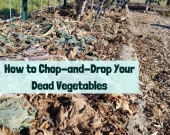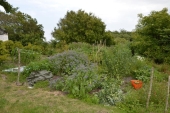posted 1 year ago
I think dose and timing are parts of the equation. Abraham definitely found out the hard way that lots of decomposing roots during a hot summer in a small pot, is a bad idea. However, I've often chopped and dropped in either the early spring in my *much* cooler, wetter climate, or in the fall. Usually the stuff I'm chopping in the fall, has already started to die back, so it's not exactly a "brown", but it's also not at the top end of "green".
In my wet winter climate, I do think that leaving plant roots in the soil helps support microbes and hold onto the soil.
However, I'm also a firm believer that, "the dose makes the poison". Often pots are on the small size for the plant/s they're supporting, so things that would work when dealing with a garden situation, doesn't scale down.
I'm sorry your plant didn't make it, Abraham. Is it one you can easily replace?







